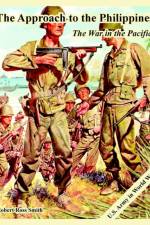- The War in the Pacific
von Robert Ross Smith
57,00 €
Triumph in the Philippines is the third volume in the subseries to deal with the reconquest of the Philippine Archipelago. The narrative traces the broad strategic vision that was employed in arriving at the decision to invade Luzon and bypass Formosa as a steppingstone to Okinawa. This study focuses on the Luzon Campaign with twenty-nine of its thirty-two chapters devoted to this subject. Although the Pacific is decidedly a joint theater, the reader will find only passing references to naval activities in support of this campaign and will have to look to other sources for a more complete picture. On 9 January 1945, the Sixth Army under the command of Lt. Gen. Walter Krueger commenced the largest United States Army operation in the Pacific. It entailed the use of more ground forces than did the operations in North Africa, Italy, or southern France. Unlike previous operations in the Pacific, the number of U.S. troops engaged, coupled with the ability to maneuver these forces in the central plains north of Manila, was more characteristic of European operations than any other Pacific campaign. By the time the campaign officially closed on 15 August 1945, over sixteen American divisions, or their equivalents, were committed to the liberation of the Philippines and the fulfillment of MacArthur's promise. Starting with the landings at Lingayen Gulf, this volume traces the advance of the U.S. troops through the Philippine central plains and the recapture of Clark Air Base and Manila. The volume ends with U.S. troops in northern Luzon and the southern Philippines. Unusual for the Pacific theater are the operations associated with the capture of a major urban center, which proved to be more costly and destructive than originally estimated. Accurate intelligence, always in short supply during hostilities, proved no less allusive in 1945. Throughout the campaign intelligence estimates between MacArthur and his field headquarters varied widely, affecting both strategic and tactical decisions. No where is this more evident than in the D-Day estimate of Japanese strength on Luzon. Eight days after the invasion, the Sixth Army's original estimate of 152,500 defenders had been raised to 234,500, which proved closer to the Japanese actual strength of some 250,000. Continued overly optimistic assessments of Japanese strength eventually took its toll in American casualties and on morale during the seven and one-half months of campaigning. When the war ended, General Yasmashita, the Japanese commander, was still conducting an active defense in northern Luzon with over 65,000 troops, estimated at the time by General Krueger to be no more then 23,000. Because of the surrender, large numbers of Japanese sources were available to the author, providing insight into the extensive Japanese dispositions, plans, and actions. The reader will find that due credit is given in this volume to the Japanese and their defense of the Philippines.



